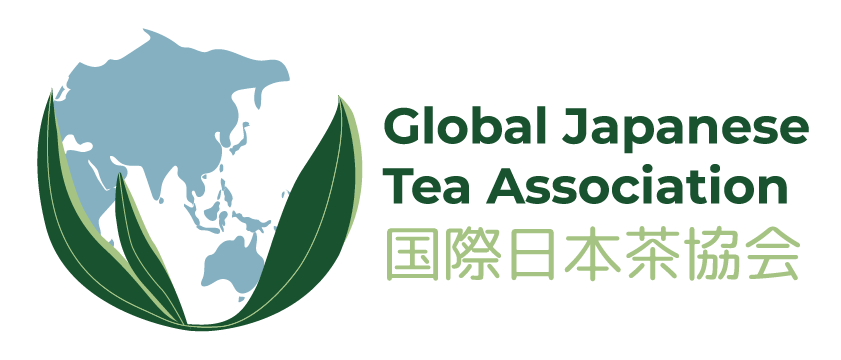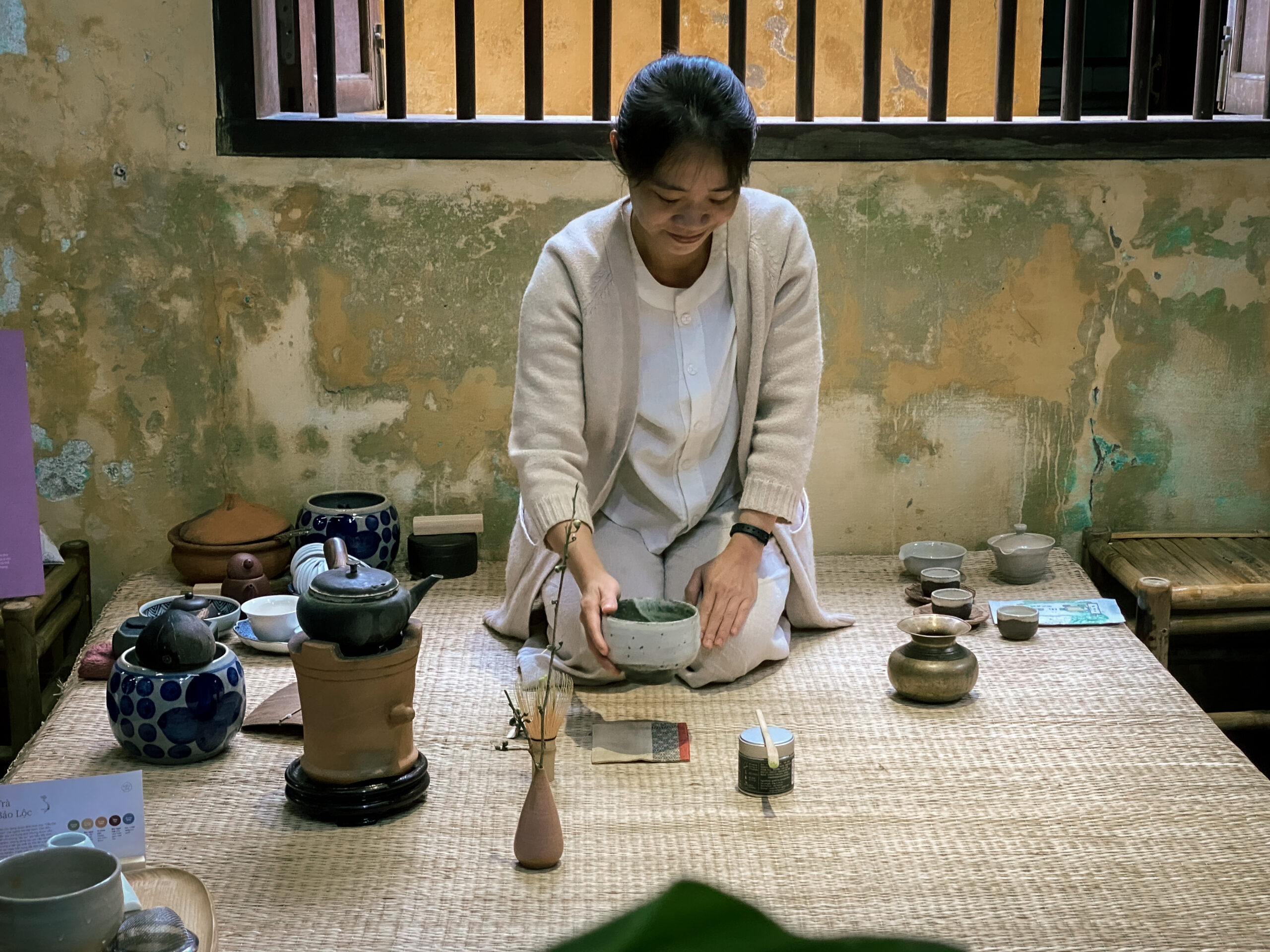From the 30th December 2022 to the 1st January 2023, the city of Hội An (fittingly, the name translates as “peaceful meeting place”) has accommodated the first Vietnamese Tea Festival in Hội An. During the 3 days of the event, 36 tea houses, producers, and tea businesses gathered in the Old Quarter to celebrate Vietnamese tea, offering tea tastings to guests and welcoming conversations while being hidden in various corners within the ancient city – for example in museums, exhibition halls, and old stores. It also featured a New Year’s ceremony in Đình Ông Voi city hall, tea talks, and a tea meditation by Buddhist monk Mr. Thích Pháp Nhiệm whose teacher was the renowned Mr. Thích Nhất Hạnh. The program was organized by Hoi An City People’s Committee in collaboration with Thao Bach Viet Co., Ltd. Among many lovely people, I met Huyen Dinh (in the first photo, preparing matcha), who is into Japanese tea and has been practicing cha dō and sencha dō in Ho Chi Minh city since 2016 , while her older brother Dinh Ngoc Dung and his wife Tran Thi Mong Kieu have been practicing since 2008. Her family’s brand has been doing various events, ceremonies, and presentations relating to Vietnamese, Japanese, Korean, and Chinese tea culture for years – including the notable cha no yu performances between 2016 – 2017. Nevertheless, the main focus of “Kiều Thị” is the preservation of the traditional way of Vietnamese tea called “Chuyên trà”, which first appeared during the late Lê Restoration period (1533 – 1789) and was perfected in the Nguyễn dynasty (1802 – 1945). The tea drinkers were very picky about selecting high-quality teapots, cups, rare bronze kettles (kyusu-looking shape due to their side handle), and charcoal stoves. Extra effort was made to improve their understanding of various types of tea and the skill of brewing a delicious cup of tea. It seemed to be a practice of particularly upstanding individuals and was a comfortable way to relax.
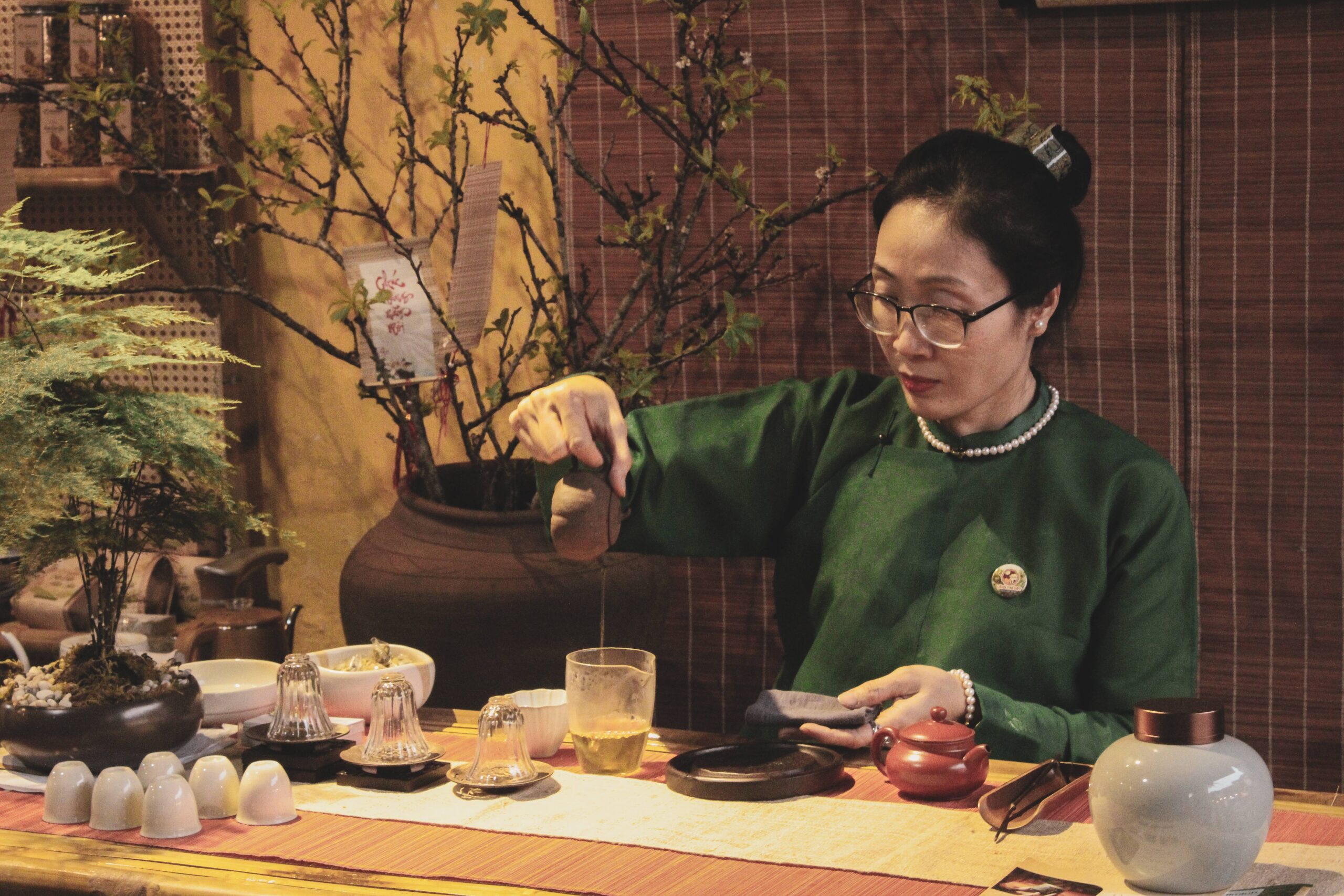
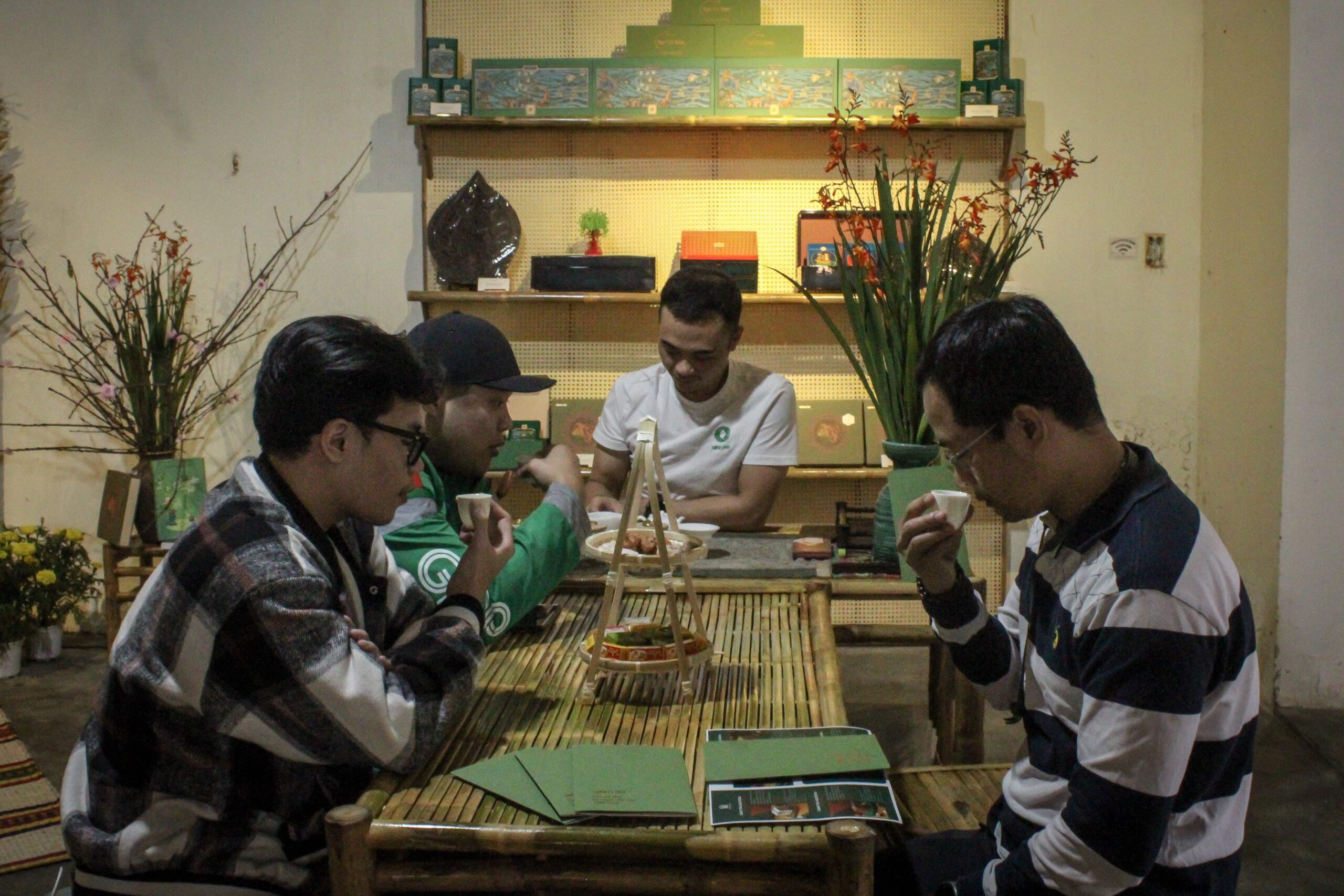
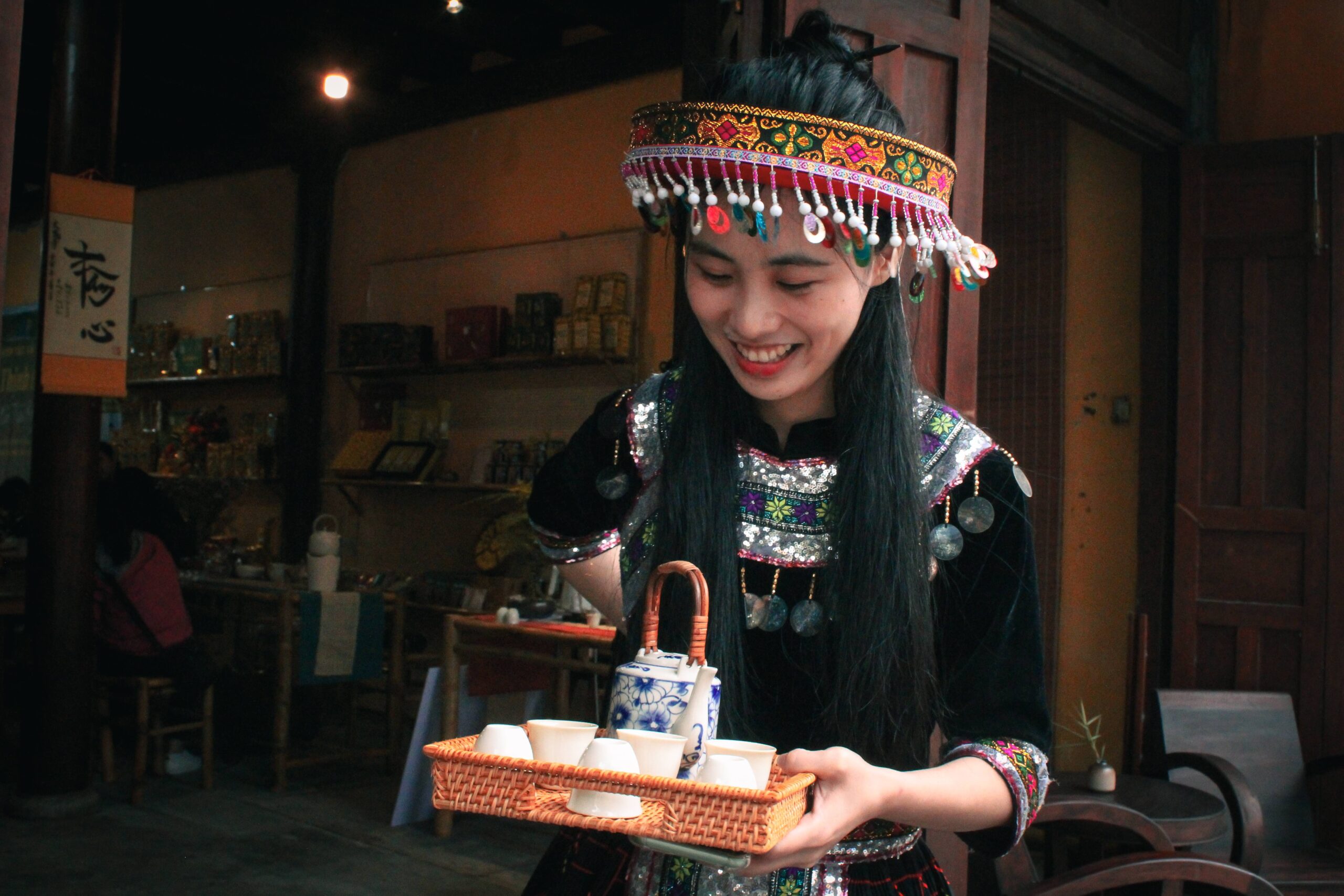
Since more than half of my backpack is tea and teaware, including matcha utensils, a shiboridashi set from Shigaraki, as well as tons of Japanese teas from the 3 months spent at Kyoto Obubu Tea Farms as an intern, I decided to spontaneously bring all of it with me for sharing. It all turned out as an unplanned Japanese tea tasting where several guests and industry specialists joined us; including Mr. Ngu Than, Mr. Nguyễn Cao Sơn and employees of Yorda (company do retail for matcha grinding stones, as Vietnam does produce cooking grade matcha). During this unplanned presentation, we enjoyed the following teas: a matcha from Azuma Tea Farms (Wazuka), a wakoucha from Kanamoto Farms (Wazuka), and a Samidori tencha from Yamamoto Jinjirou (Uji). Moreover, even if time didn’t allow to taste a kabuse sencha from Chakoubou Yamadaseicha (Fuji) and a dark roast hojicha from Obubu Tea Farms (Wazuka), those teas reached the appreciation and storytelling stage.

Despite not being part of the festival’s program, the Japanese tea tasting ended up being a beautiful informal exchange between tea enthusiasts. It was not a tea ceremony, since it held more of an educational and sharing value. Although, worth mentioning that Huyen’s matcha whisking skills and knowledge about Urasenke also contributed to the wonders of sharing Japanese tea with the world.
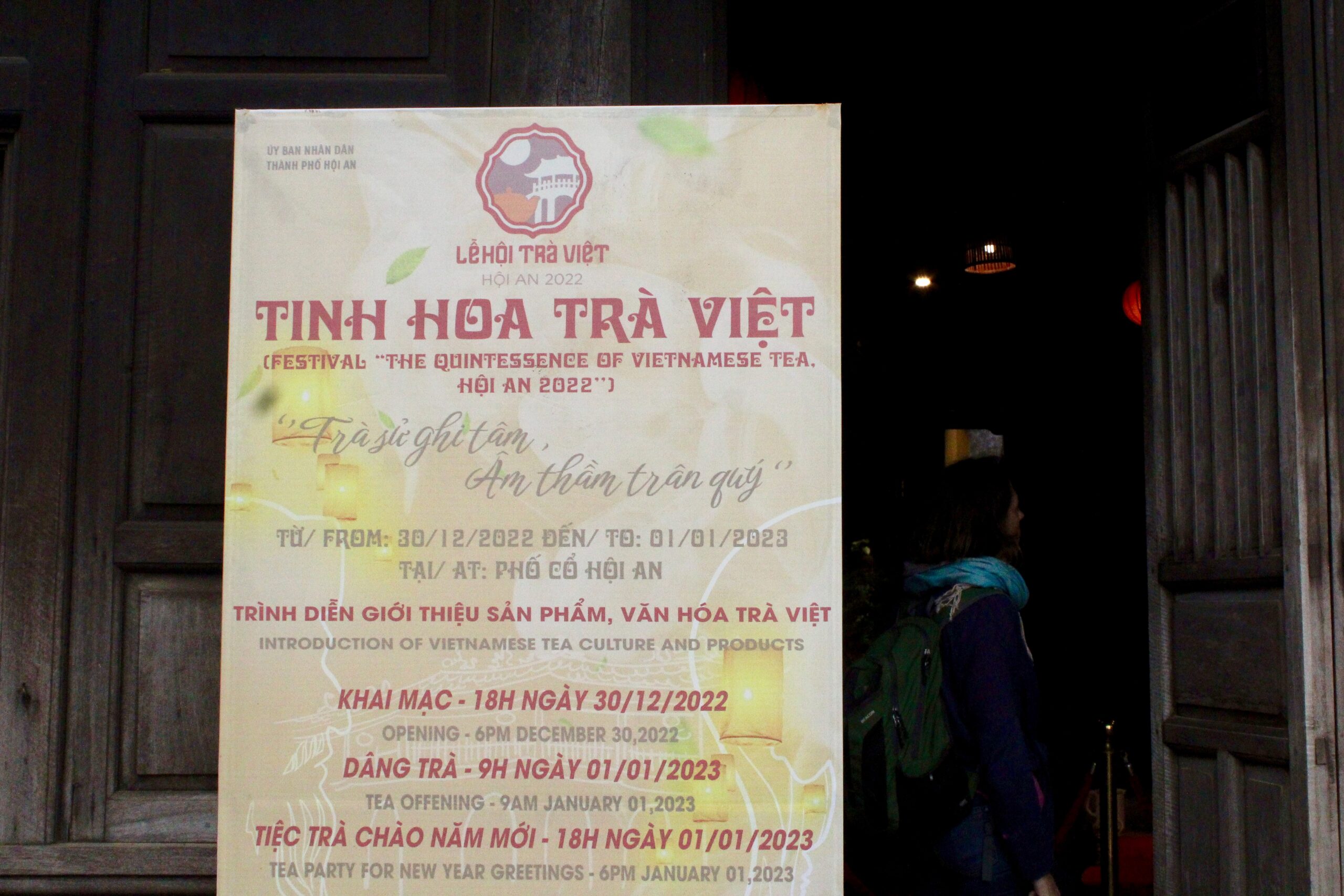
* Article and photos by Katrina Wild, who has been travelling through different countries to explore and learn the wide world of tea. After her internship in Japan and her tea studies in Vietnam, she is now on a journey of exploring tea in Taiwan while working on an app for worldwide tea tours, events, and education called TEA TEA ME.
